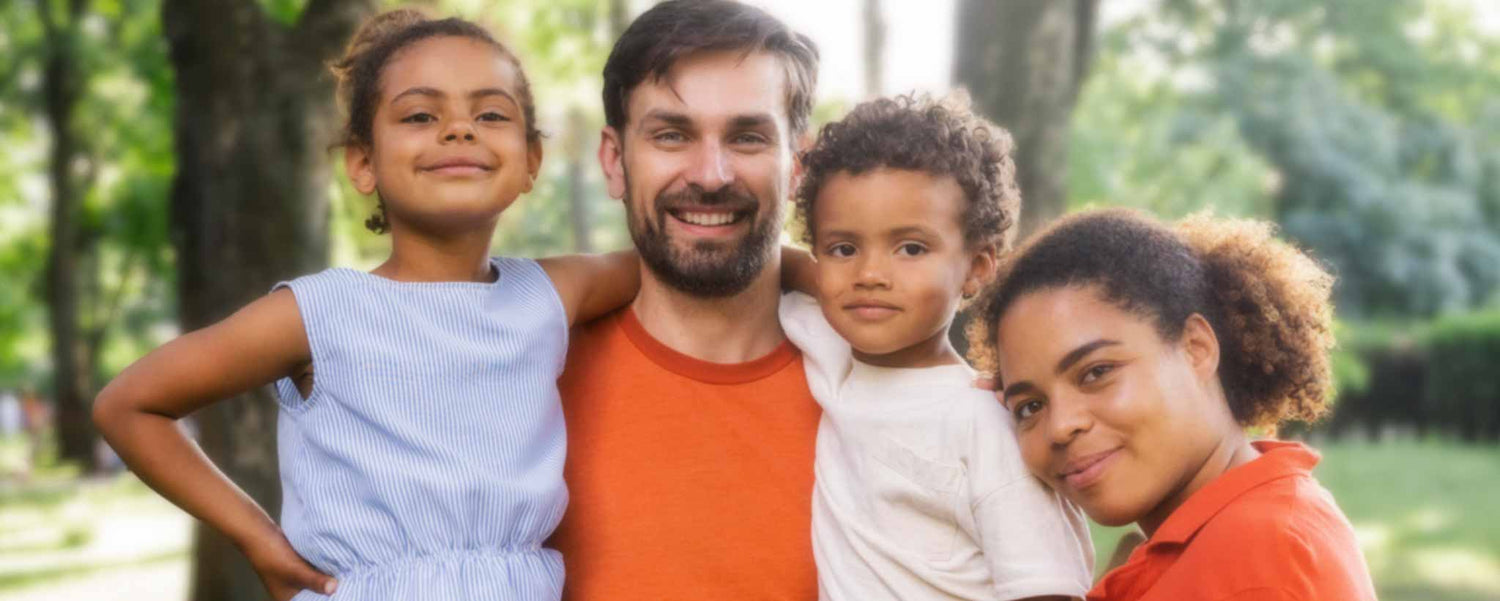Blended families are woven into the thread of today’s society. If you’re facing the prospect, this article provides tips to overcome unfavorable outcomes.
Redefining Family
Blended families—sometimes known as reconstituted families—are here to stay. These families, where at least one partner has at least one child from a previous relationship, represent around 40% of unions in the U.S. This figure has remained constant for the last 30 years. Around 16% of children are living as part of a stepfamily.
That said, being part of a blended family brings challenges a-plenty. Navigating the complex family dynamics of ex-partners and stepparents can be a minefield. In this article, we take a solution-focused approach to overcoming the challenges of living as part of a blended family.
Blended Families: The Challenge
What are the challenges? Getting a handle on the “what” of blended family challenges can help with clarifying the “how” of solutions to these challenges. Blended families can include multiple children.
One or the other partner brings a child or children from a previous relationship. And you may have further children together from this new union. That might mean several children are living under one roof when everyone’s home.
There’s a complex interplay of relationships and connections between everyone. Some of you will refer to another member of the family with the controversial designation, “Dad.” This can have quite different meanings among blended family members. There will be family members permanently living at the family home.
Other members transit back and forth between parents’ homes. The children may entertain as many as four pairs of grandparents, along with more aunts and uncles. The simple logistics of who’s where can become complicated, calling for serious calendar management.
Additionally, emotions are never too far below the surface within blended families. Relationship breakdown and divorce can be messy and painful, particularly when involving children. Even with the most intentional conscious uncoupling, children are often confused and disoriented when divorced parents share child-rearing.
Feelings of loss and envy may erupt among children who’ve already watched parents deal with a difficult breakup. They must then transition through the emotions associated with their single-parent meeting and marrying someone new.
Children are sometimes estranged from a parent – perhaps after abuse or neglect. This can manifest a range of residual difficult emotions, creating ripple effects upon the wider blended family.
Blended Families: Possible Ways to Happy Families
So, there are substantial challenges of living as part of a blended family. What are some of the practical strategies that can help navigate this difficult terrain? We’ll consider four approaches that can help.
Schedule Like a Pro
With several people to factor into the family schedule, you need to stay on top of your calendar. Knowing who’s going where, doing what, and when, can help you to stay organized and avoid last-minute panic. Many blended families find it helpful to sit down on a Sunday and chat through the week ahead.
Stay abreast of overlapping events. Find a scheduling system that works for you all. You can choose a digital calendar that automatically syncs everyone’s schedules. But an old-school diary printout that you pin to the kitchen noticeboard also works well. Staying organized and on top of everyone’s schedules will help keep things running smoothly.
Share the Load
Plenty of family members generate excessive housework. Stay on top of the cleaning, shopping, cooking, and laundry. Cue stress and cue frustrated outbursts if the bulk of the work falls to one or two of you. With some investment, you can get all hands on deck and share the load – involving even the preschool members of the family. Incorporate cleaning with kids into your household routine.
If chore delegation feels too difficult, give yourself a break by opting to outsource some of the many household tasks. You’ll find reliable local home cleaning firms via word-of-mouth recommendations. Outsourcing some of the household tasks may just keep your blended family sane.
Work on and Model Emotional Intelligence
Navigating the complex feelings that relate to part-relationships is a huge challenge for you and your children alike. It’s also a great opportunity to work on developing and then modeling to your children what emotional intelligence looks like.
Owning your feelings and taking responsibility prevents emotional repression or emotional projection. You’ll be better able to recognize and stop any tendency to take out anger and resentment unfairly on others. Clear and open communication is critical to an effective understanding of emotional needs. Find ways to identify your feelings and help the children in your family to name their emotions.
Recognize the Benefits
Yes, being part of a blended family has its challenges. But that’s not the full story. Blended families also have benefits and it's good to recognize, with gratitude, what’s great about your blended family. This helps you to keep a balanced picture when you experience tough times. Having left a previous relationship and started this new blended family, you have wisdom that comes from experience.
You learned what did and didn’t work for you in relationships. Your partner may also have hard-won insights. A blended family is a fantastic way to model the power of a fresh start to your children, and how good effects can arise from difficulty. When times are good, what can beat a house filled with the sound of children laughing and playing together?
So, it’s good to be open and honest that blended families introduce challenges and tricky terrain to navigate. These problems are not insurmountable. By implementing practical solutions, and a whole heap of emotional resilience, you can gain so much from being part of a blended family.
To support the writing of useful articles about parents, ClinicalPosters sells human anatomy charts, scientific posters, and other products online. You may sponsor specific articles, become a ClinicalNovellas Member, or remit a small donation.
ClinicalPosters sells human anatomy charts, scientific posters, and other products online to offset expense of the writing useful articles about parents. Slide extra posters into DeuPair Frames without removing from the wall.
Show your support by donating, shopping for ClinicalPins, becoming a ClinicalNovellas Member, or leaving an encouraging comment to keep the research going.
To support the writing of useful articles about parents, ClinicalPosters sells human anatomy charts, scientific posters, and other products online. You may sponsor specific articles or remit a small donation.
ClinicalPosters sells human anatomy charts, scientific posters, and other products online to offset expense of the writing useful articles about parents. Slide extra posters into DeuPair Frames without removing from the wall.
ClinicalPosters sells human anatomy charts, scientific posters, and other products online. You may remit a small donation or become a ClinicalNovellas Member.
You can support the writing of useful articles about parents by sponsoring specific articles, becoming a ClinicalNovellas Member, or remitting a small donation.







 Romance & Health Intertwine. Fall in love with a captivating romance miniseries that explores the essence of well-being. Become a ClinicalNovellas member for heartwarming tales.
Romance & Health Intertwine. Fall in love with a captivating romance miniseries that explores the essence of well-being. Become a ClinicalNovellas member for heartwarming tales.




